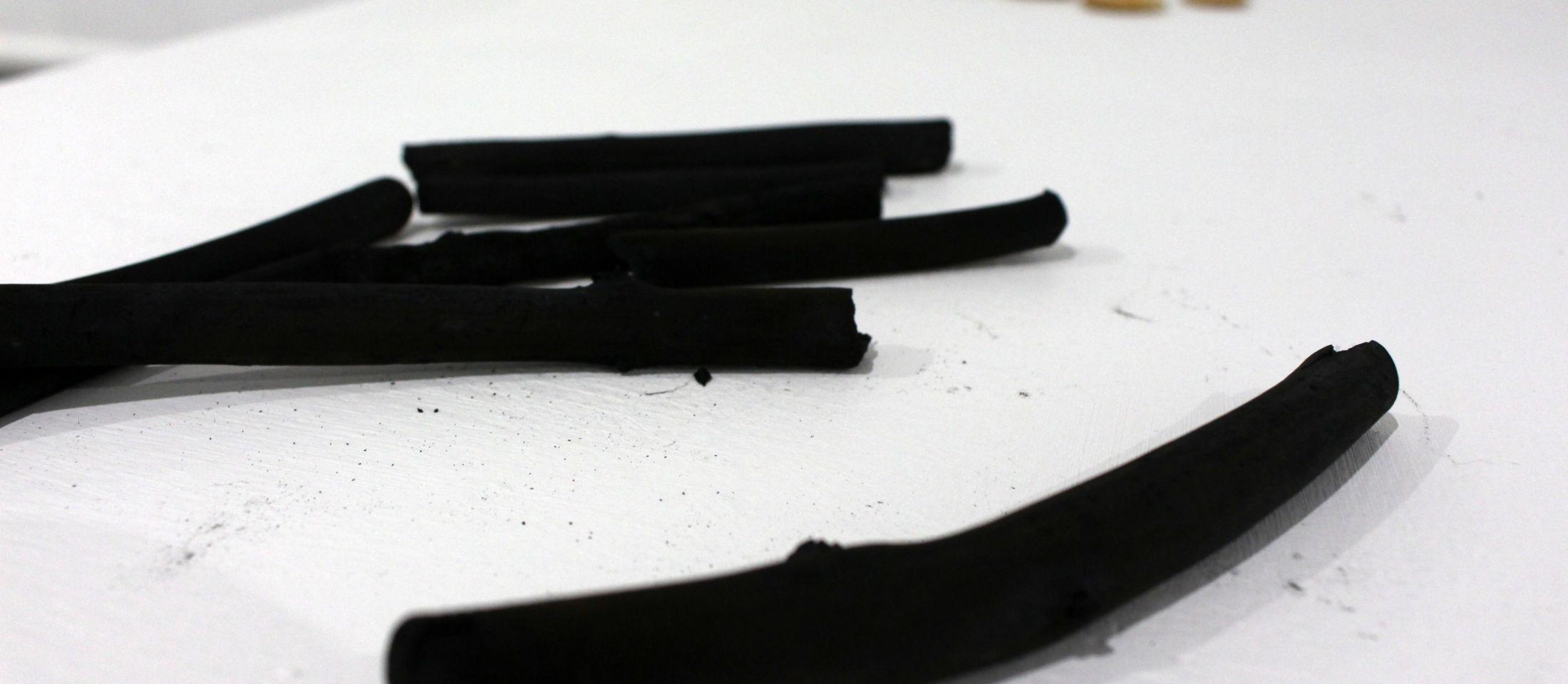
The Ash Archive. The Halpern Gallery, Chatham (2018). Photo: Elena Amoros

The Ash Archive. The Halpern Gallery, Chatham (2018). Photo: Elena Amoros
Ashes to ashes,
Dust to dust.
This quote sadly represents the situation in which many ash trees, key element of our ecosystem and environment, are right now. Scientifically known as Fraxinus, and commonly as ash tree, this species is dying all over the country. The Fraxinus excelsior, which dwells in Great Britain and most parts of Northern Europe, is not immune to the Chalara fraxinea, a fungus that has spread to all over Europe producing ash dieback, a currently untreatable disease that is killing thousands of trees.
The Ash Project was born from this issue. What the project offers is a series of events, including walks, talks, workshops and cultural activities, in order to raise awareness about the reality of the ash tree. This scheme, which is part of Kent Downs AONB, assures that 90 to 98% of ash tree specimens are expected to die in the next ten years. Just try to imagine for a second how our national landscapes are supposed to change if almost a whole species of tree disappears right under our noses. This serious diagnosis also leads to a series of other distressing prospective circumstances for our fauna, biodiversity and our quality of life, which will make an unbearable future for all of us.
Despite the fact that a palliative has not been found yet, many scientists and experts are trying to find a solution. As well as some older trees seem immune to the fungus, other species of Fraxinus, those from Southern Europe, also look more resilient to the disease. Perhaps the most reasonable alternative is to inbreed Chalara fraxinea resistant specimens through genetic engineering techniques in order to create new immune exemplars.
But how can we help? What can we do us as individuals? Well, The Ash Archive, – which is part of The Ash Project – is a collection of artworks, poems and objects in relation to the ash tree. In collaboration with renowned artists, the archive also accepts donations from anyone who wants to collaborate with the growth of such collection. Did you know that the charcoals used for art sketches are made out of ash tree? Who could imagine that hurley sticks were made of wooden ash? This tree and all its possible transformations or artistic evocations create an utterly diverse and assorted compilation that is The Ash Archive. Furthermore, this miscellany has been displayed in different art exhibitions, which have been received with a very warm welcome by all the visitors from the Studio 3 Gallery in Canterbury, the ones from LIMBO in Margate and lately, those at the Halpern Gallery in Chatham. In addition, a new show is also expected at the Brewery Tap Gallery in Folkestone next September.
The exhibition gladly receives any eager and inquisitive visitor that wants to discover new insights about the ash tree and learn about the not very optimistic expectations about our future. Therefore, it is important to understand The Ash Archive as a cultural response to an ecological problem that will affect our lives in an atrocious way for the next decades.
The Ash Archive is a family album.
The Ash Archive is an encapsulation that protects the memories from oblivion.
The Ash Archive is the defence against the loss, death and ephemeral status of one of the main relics of our national heritage, but also, the epitaph of a foretold death.
The Ash Archive. Exhibited in galleries across Kent in 2018.
Elena Amoros (University of Kent).